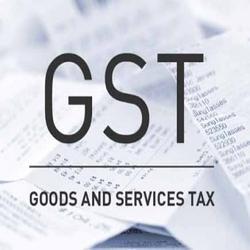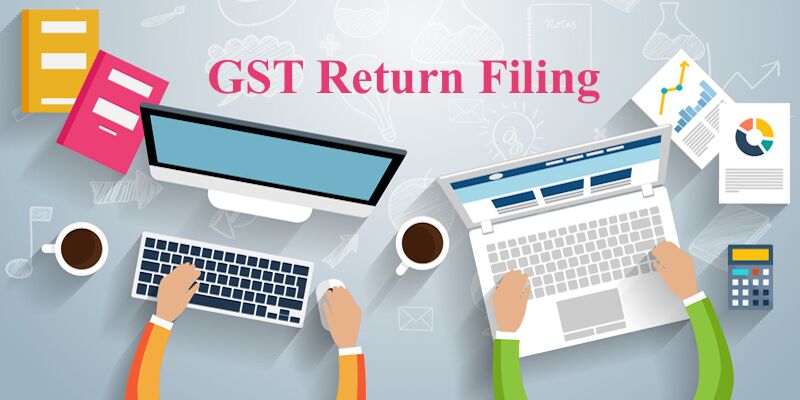Indirect Tax Services
Leading of GST Consultancy Services and GST Return Filing Services from Baghpat.
Preferred Buyer From
| Location | Anywhere in India |
As governments around the world look to raise additional revenues to plug shortfalls, many governments have shifted away from corporate, income, and payroll taxes. Instead, they’re raising revenue through ‘indirect taxes’, such as value added tax (VAT), goods and services tax (GST), sales and local taxes, customs and excise duties, and so on. Proof of this trend can be seen with the introduction of GST in Malaysia in 2015, as well as the planned introduction of GST in India in 2017 and VAT in the Gulf States.
The introduction of new indirect tax regimes and changes to existing regimes can create significant challenges for most business. Though certain indirect taxes are not a bottom line cost for many clients, the compliance requirements can be complex and there can be an impact on cash flow. Our Indirect Tax Services team has deep knowledge about indirect taxes in the 162 countries and territories in our global organisation. Our Indirect Tax team meets regularly and our corporate culture of collaboration means we bring our collective knowledge to all engagements.
Our tax professionals can help you manage your indirect tax compliance burden and we can help you put strategies in place to ensure an efficient approach to the varied challenges created by indirect taxes. We provide an integrated approach to help you manage your indirect tax issues across jurisdictions. And, you get hands-on involvement of our most experienced professionals – people who take pride in exceptional client service.
Our services related to indirect taxes include:
- Providing advice for minimising VAT/GST cash flow issues and the chance of being subject to interest or penalties for non-compliance
- Developing and implementing appropriate indirect tax strategies
- Providing advice about the implications of indirect taxes on real estate transactions
- Assisting with the implementation of efficient processes to avoid customs duty costs and cash flow issues
- Training staff on specific indirect tax-related issues
- Preparing ‘bad debt’ relief claims to recoup VAT overpaid in insolvency situations
- Preparing technical tax submissions to tax authorities with respect to indirect tax issues
- Engaging with tax authorities on your behalf in the event of an indirect tax audit
Good and Service Tax is the largest Indirect tax reform in India which is going to impact the way business is carried out at pan India level. It’s going to replace almost all the existing Indirect tax or levies like Excise Duty, Service Tax , VAT, Entry Tax etc. It’s impact will vary across the different kind of businesses.
Dual GST structure enhances the overall complexity which can be mitigated through a robust IT system. It’s imperative and high time for companies to gear up and assess the likely impact of GST on their kind of business.
Old age concepts like “Sale”, “Manufacturing”, “Stock Transfer” needs to be unlearned and new terms like “Destination”, “Consumption”, “Place of supply” to be learned.
Now, almost whole India will be one market, breaking the boundaries of erstwhile State specific indirect taxes.
Our scope of services under GST regime
- Impact analysis - Our team of experts will understand your business and carry out an impact analysis covering all the important aspects i.e. working capital requirement, logistic issues, job work vs. In-house, procurement, Maximum Retail Price.
- Transition support - For existing registered entities under various Indirect tax laws, there would be an automatic transition to GST regime. The transition process will require assessment of situation and positions of taxation liability under existing laws. We’ll work out the strategy for transition to GST and it’s likely impact on the closing balance of tax obligations and benefits.
- Regular compliances - Once GST is made applicable and transition process is complete, our next role would be to support you in regular compliances under GST which includes but not limited to new registrations, amendments in existing registration, calculation of periodical tax liability, preparation and filing of tax return, tax assessment etc.
Preferred Buyer From
| Location | Anywhere in India |
Types of GST Returns
- GSTR-1 is the return to be furnished for reporting details of all outward supplies of goods and services made, or in other words, sales transactions made during a tax period, and also for reporting debit and credit notes issued. Any amendments to sales invoices made, even pertaining to previous tax periods, should be reported in the GSTR-1 return.
- GSTR-1 is to be filed by all normal taxpayers who are registered under GST. It is to be filed monthly, except in the case of small taxpayers with turnover up to Rs.1.5 crore in the previous financial year, who can file the same on a quarterly basis.
- GSTR-2A is the return containing details of all inward supplies of goods and services i.e. purchases made from registered suppliers during a tax period. The data is auto-populated based on data filed by the suppliers in their GSTR-1 return. GSTR-2A is a read-only return and no action can be taken.
- GSTR-2 is the return for reporting the inward supplies of goods and services i.e. the purchases made during a tax period. The details in the GSTR-2 return are auto-populated from the GSTR-2A. Unlike GSTR-2A, the GSTR-2 return can be edited.
- GSTR-2 is to be filed by all normal taxpayers registered under GST, however, the filing of the same has been suspended ever since the inception of GST.
- GSTR-3 is a monthly summary return for furnishing summarized details of all outward supplies made, inward supplies received and input tax credit claimed, along with details of the tax liability and taxes paid. This return is auto-generated on the basis of the GSTR-1 and GSTR-2 returns filed.
- GSTR-3 is to be filed by all normal taxpayers registered under GST, however, the filing of the same has been suspended ever since the inception of GST.
- GSTR-3B is a monthly self-declaration to be filed, for furnishing summarized details of all outward supplies made, input tax credit claimed, tax liability ascertained and taxes paid.
- GSTR-3B is to be filed by all normal taxpayers registered under GST.
- GSTR-4 is the return that was to be filed by taxpayers who have opted for the Composition Scheme under GST. CMP-08 is the return which has replaced the now erstwhile GSTR-4. The Composition Scheme is a scheme in which taxpayers with turnover up to Rs.1.5 crores can opt into and pay taxes at a fixed rate on the turnover declared.
- The CMP-08 return is to be filed on a quarterly basis.
- GSTR-5 is the return to be filed by non-resident foreign taxpayers, who are registered under GST and carry out business transactions in India. The return contains details of all outward supplies made, inward supplies received, credit/debit notes, tax liability and taxes paid.
- The GSTR-5 return is to be filed monthly for each month that the taxpayer is registered under GST in India.
- GSTR-6 is a monthly return to be filed by an Input Service Distributor (ISD). It will contain details of input tax credit received and distributed by the ISD. It will further contain details of all documents issued for the distribution of input credit and the manner of distribution
- GSTR-7 is a monthly return to be filed by persons required to deduct TDS (Tax deducted at source) under GST. GSTR 7 will contain details of TDS deducted, the TDS liability payable and paid and TDS refund claimed, if any.
- GSTR-8 is a monthly return to be filed by e-commerce operators registered under the GST who are required to collect tax at source (TCS). GSTR-8 will contain details of all supplies made through the E-commerce platform, and the TCS collected on the same.
- The GSTR-8 return is to be filed on a monthly basis.
- GSTR-9 is the annual return to be filed by taxpayers registered under GST. It will contain details of all outward supplies made, inward supplies received during the relevant previous year under different tax heads i.e. CGST, SGST & IGST and HSN codes, along with details of taxes payable and paid. It is a consolidation of all the monthly or quarterly returns (GSTR-1, GSTR-2A, GSTR-3B) filed during that year.
- GSTR-9 is required to be filed by all taxpayers registered under GST*, except taxpayers who have opted for the Composition Scheme, Casual Taxable Persons, Input Service Distributors, Non-resident Taxable Persons and persons paying TDS under section 51 of CGST Act.
- As per the CBIC notification 47/2019, the annual return under GST for taxpayers having an aggregate turnover which does not exceed Rs.2 crore has been made optional for FY 2017-18 and FY 2018-19.
- GSTR-9A is the annual return to be filed by taxpayers who have registered under the Composition Scheme in a financial year*. It is a consolidation of all the quarterly returns filed during that financial year.
- GSTR-9A filing for Composition taxpayers has been waived off for FY 2017-18 and FY 2018-19 as per the decision taken in the 27th GST Council meeting.
- GSTR-9C is the reconciliation statement to be filed by all taxpayers registered under GST whose turnover exceeds Rs.2 crore in a financial year. The registered person has to get their books of accounts audited by a Chartered/Cost Accountant. The statement of reconciliation is between these audited financial statements of the taxpayer and the annual return GSTR-9 that has been filed.
- GSTR-9C is to be filed for every GSTIN, hence, one PAN can have multiple GSTR-9C forms being filed.
- As per the CBIC notification 16/2020, GSTR-9C is waived off for the taxpayers with an aggregate turnover of more than Rs 5 crore for the financial year 2018-19.
- GSTR-10 is to be filed by a taxable person whose registered has been cancelled or surrendered. This return is also called a final return and has to be filed within 3 months from the date of cancellation or cancellation order, whichever is earlier.
- GSTR-11 is the return to be filed by persons who have been issued a Unique Identity Number(UIN) in order to get a refund under GST for the goods and services purchased by them in India. UIN is a classification made for foreign diplomatic missions and embassies not liable to tax in India, for the purpose of getting a refund of taxes. GSTR-11 will contain details of inward supplies received and refund claimed.
Subject to changes by Notifications/ Orders
Statement of self-assessed tax by composition dealers – same as the erstwhile form GSTR-4, which is now made an annual return with effect from FY 2019-2020 onwards.
Late filing of GST Returns
- Return filing is mandatory under GST. Even if there is no transaction, you must file a Nil return.
- You cannot file a return if you do not file previous month/quarter’s return.
- Hence, late filing of GST return will have a cascading effect leading to heavy fines and penalty.
- The late filing fee of the GSTR-1 is populated in the liability ledger of GSTR-3B filed immediately after such delay.
Interest/late fees to be paid
- Interest is 18% per annum. It has to be calculated by the taxpayer on the amount of outstanding tax to be paid. It shall be calculated on the Net tax liability identified in the ledger at the time of payment. The time period will be from the next day of filing due date till the actual date of payment.
- As per GST Act Late fee is Rs. 100 per day per Act. So it is 100 under CGST & 100 under SGST. Total will be Rs. 200/day. The maximum is Rs. 5,000. There is no late fee on IGST.
- To learn more about late fees charged across the GST Return periods, read our article on Late fees under GST.


